Complete Guide to Speaker Types & Understanding Audio Architecture
From Transducers to Soundscapes
Speakers are the final component in the audio reproduction chain, responsible for converting electrical signals into audible sound waves. Their design, configuration, and placement directly influence how sound is perceived in various environments, including homes, vehicles, studios, and public venues. This guide provides a comprehensive overview of the different types of speakers, explaining their functions, structural characteristics, and optimal use cases. Each speaker type serves a distinct acoustic purpose, whether it is enhancing bass, improving vocal clarity, or delivering immersive spatial effects. Understanding these categories is essential for anyone building a sound system, whether for personal enjoyment or professional application.
Complete Guide to Speaker Types
Floor-Standing Speakers
Floor-standing speakers, often referred to as tower speakers, are designed to deliver full-range sound across a wide frequency spectrum. These speakers typically include multiple drivers, such as woofers, midrange units, and tweeters, housed within tall, vertically oriented enclosures. Their physical size allows for larger internal volume, which contributes to deeper bass response and broader sound dispersion. Floor-standing models are commonly used in home theater systems and high-fidelity stereo setups due to their ability to fill large rooms with dynamic sound.
Most floor-standing speakers are passive, meaning they require an external amplifier or receiver to function. The inclusion of bass reflex ports in many designs enhances low-frequency output by allowing air movement through tuned vents. Cabinet construction materials, such as medium-density fiberboard (MDF) or hardwood, influence resonance control and tonal coloration. Proper placement is critical, as these speakers perform best when positioned away from walls to reduce reflections and standing waves.
Many models support bi-wiring or bi-amping, which separates signal paths for improved clarity and control. Some advanced designs incorporate built-in subwoofers to extend bass capabilities without requiring additional components. Floor-standing speakers are engineered for high power handling, making them suitable for dynamic musical genres and cinematic soundtracks. Their visual presence also contributes to room aesthetics, often serving as focal points in listening environments.
Bookshelf Speakers
Bookshelf speakers are compact audio units designed for placement on shelves, stands, or furniture surfaces. Despite their smaller size, they are capable of delivering high-quality sound with precise imaging and clarity. Most bookshelf speakers are configured as two-way systems, combining a woofer for low and midrange frequencies with a tweeter for high-frequency reproduction. Their reduced cabinet volume limits bass extension, but they excel in midrange accuracy and treble detail.
These speakers are ideal for small to medium-sized rooms, where space constraints prevent the use of larger floor-standing models. Like tower speakers, most bookshelf units are passive and require external amplification. When positioned at ear level and isolated from surfaces using stands or pads, they produce a well-defined soundstage. Some designs include rear or front-facing ports, which influence placement flexibility and bass performance.
Cabinet materials range from vinyl-wrapped MDF to real wood veneers, each affecting acoustic behavior. Bookshelf speakers are often tuned to emphasize vocal clarity and acoustic instrument reproduction. They can be paired with subwoofers to create a full-range system that compensates for limited low-frequency output. These speakers are widely used in desktop setups, stereo systems, and nearfield monitoring environments. Their affordability and versatility make them popular among both entry-level users and experienced audiophiles.
Table – Floor-Standing vs Bookshelf Speakers
| Feature | Floor-Standing Speakers | Bookshelf Speakers |
|---|---|---|
| Physical Size | Large vertical enclosures | Compact horizontal units |
| Frequency Range | Full-range with deep bass | Limited bass extension |
| Placement | Positioned on the floor | Placed on shelves or stands |
| Power Handling | High wattage capacity | Moderate power requirements |
| Room Suitability | Best for large spaces | Ideal for small to medium rooms |
| Imaging | Wide sound dispersion | Precise stereo imaging |
| Bass Performance | Strong low-frequency output | Requires subwoofer for full bass |
| Common Applications | Home theater and hi-fi systems | Stereo setups and desktop audio |
Center Channel Speakers
Center channel speakers are designed to reproduce dialogue and central audio elements in multi-channel sound systems. These speakers are typically placed directly above or below a television or projection screen to anchor the soundstage. Their primary function is to deliver clear and intelligible speech, which is critical in film and television playback. Most center channel speakers use a horizontal driver arrangement to ensure wide dispersion across the listening area. They often include two midrange drivers flanking a tweeter, forming a symmetrical layout that enhances vocal clarity.
The frequency response of center speakers is tuned to emphasize the midrange, where human speech resides. These speakers are passive and require connection to an AV receiver or amplifier. Cabinet designs vary, with sealed and ported options affecting bass extension and placement flexibility. Matching the tonal characteristics of the center speaker with the left and right channels is essential for a cohesive soundstage. Placement at ear level improves intelligibility and reduces phase issues. Center speakers are not typically used for music playback but are indispensable in surround sound configurations.
Their role becomes even more prominent in 5.1, 7.1, and Dolby Atmos systems. Some models include waveguides or acoustic lenses to control dispersion. The materials used in the drivers and cabinet influence resonance and coloration. Overall, the center channel speaker is the backbone of cinematic audio reproduction, ensuring that dialogue remains clear and anchored.
Table – Center Channel Speaker Features
| Feature | Description |
|---|---|
| Primary Function | Dialogue reproduction |
| Placement | Above or below screen |
| Driver Configuration | Horizontal layout with midrange and tweeter |
| Frequency Emphasis | Midrange clarity |
| Power Type | Passive (requires amplifier) |
| Cabinet Design | Sealed or ported |
| Common Use | Home theater systems |
| Dispersion Pattern | Wide horizontal, narrow vertical |
Subwoofers
Subwoofers are specialized speakers engineered to reproduce low-frequency sounds, typically ranging from 20 Hz to 200 Hz. These frequencies include bass and sub-bass content, which contribute to the physical impact and depth of audio playback. Subwoofers use large drivers, often between 8 and 15 inches, to move significant volumes of air.
Their enclosures are built to withstand internal pressure and minimize distortion. Subwoofers can be active, with built-in amplifiers, or passive, requiring external power sources. They are essential in home theater systems, car audio setups, and professional sound reinforcement. Placement affects performance significantly, with corners and walls amplifying bass through boundary reinforcement. Most subwoofers include adjustable crossover settings to control the frequency range they handle. Phase controls help align timing with other speakers, preventing cancellation or reinforcement issues.
Enclosure types include sealed, ported, and bandpass, each offering different sonic characteristics. Sealed enclosures provide tight and accurate bass, while ported designs offer louder and deeper output. Bandpass enclosures are efficient but may introduce coloration. Subwoofers are often paired with satellite speakers to create full-range systems. Their integration must be carefully managed to avoid boominess or frequency gaps. Materials used in the cabinet and driver cone affect responsiveness and tonal accuracy. Subwoofers enhance immersion in movies, music, and gaming by delivering tactile low-end energy.

Table – Subwoofer Enclosure Types
| Enclosure Type | Description | Sound Character |
|---|---|---|
| Sealed | Airtight cabinet | Tight and accurate bass |
| Ported | Includes tuned vent | Louder and deeper bass |
| Bandpass | Dual-chamber design | Efficient but colored output |
Tweeters
Tweeters are small drivers designed to reproduce high-frequency sounds, typically above 2,000 Hz. These frequencies include treble elements such as cymbals, vocal sibilance, and ambient effects. Tweeters are essential for delivering clarity, detail, and spatial cues in audio playback. Common tweeter types include dome, horn, ribbon, and planar magnetic designs. Dome tweeters are widely used due to their smooth dispersion and balanced response. Horn tweeters are more efficient and are often found in professional audio systems. Ribbon tweeters use thin metal strips suspended in magnetic fields, offering fast transient response and low distortion.
Planar magnetic tweeters combine ribbon and dynamic principles, producing wide soundstages and accurate imaging. Tweeters are typically paired with woofers in two-way or three-way speaker systems. Their placement at ear level is critical for optimal imaging and clarity. Materials used in tweeter construction include silk, aluminum, titanium, and beryllium, each contributing unique sonic characteristics. Tweeters require precise crossover design to prevent distortion and ensure seamless integration with other drivers.
They are sensitive to power and can be damaged by excessive volume or clipping. Tweeters are used in home audio, studio monitors, and car audio systems. Their role is to reveal fine details and enhance the realism of recordings. Proper alignment and matching with other drivers ensure a coherent and immersive listening experience.
Table – Tweeter Types and Characteristics
| Type | Material | Sound Trait | Common Use |
|---|---|---|---|
| Dome | Silk, metal | Smooth and balanced | Home audio |
| Horn | Metal, plastic | Efficient and directional | Professional audio |
| Ribbon | Thin metal | Fast and detailed | High-end systems |
| Planar Magnetic | Composite | Wide and accurate | Audiophile setups |
Midrange Drivers
Midrange drivers are responsible for reproducing frequencies typically ranging from 250 Hz to 2,000 Hz. This range includes most vocal content, string instruments, and many acoustic elements. These drivers are often found in three-way speaker systems, positioned between woofers and tweeters to handle the middle portion of the audio spectrum.
Their design focuses on clarity and accuracy, ensuring that vocals and mid-frequency instruments are presented without distortion. Midrange drivers vary in size, usually between 3 and 6 inches in diameter, depending on the application. Materials used for cones include paper, polypropylene, and woven composites, each offering different tonal characteristics. The enclosure and crossover design play a significant role in how midrange drivers integrate with other components. Proper alignment and phase coherence are essential to avoid frequency overlap or gaps. Midrange drivers are often mounted in sealed compartments to isolate their output from bass and treble interference.
They are used in both passive and active speaker systems, depending on the overall design. These drivers are critical in studio monitors, where vocal precision is paramount. In home audio systems, they contribute to a balanced and natural sound signature. Their performance is influenced by cabinet resonance, damping materials, and crossover slope. Midrange clarity is often the benchmark for evaluating speaker quality. When properly implemented, midrange drivers enhance realism and emotional impact in audio playback.
Table – Midrange Driver Characteristics
| Attribute | Description |
|---|---|
| Frequency Range | 250 Hz to 2,000 Hz |
| Common Materials | Paper, polypropylene, woven composites |
| Typical Size | 3 to 6 inches |
| Role in System | Handles vocals and acoustic instruments |
| Placement | Between woofer and tweeter in three-way systems |
| Enclosure Type | Often sealed for isolation |
| Application | Studio monitors, home audio, professional setups |
Full-Range Drivers
Full-range drivers are designed to reproduce the entire audible frequency spectrum from a single transducer. These drivers aim to deliver bass, midrange, and treble without the need for separate components. They are commonly used in minimalist speaker designs, such as single-driver enclosures and open-baffle systems. Full-range drivers typically range from 3 to 8 inches in diameter, depending on the intended use. Their design often includes whizzer cones or phase plugs to extend high-frequency response.
While they offer simplicity and coherence, full-range drivers may struggle with extreme bass or treble reproduction. Enclosure design is critical, with transmission line, horn-loaded, and open-baffle configurations used to enhance performance. These drivers are popular among audiophiles who value purity and point-source imaging. Full-range systems eliminate crossover distortion, resulting in a more seamless sound. Materials used include paper, bamboo fiber, and lightweight composites.
Placement and room acoustics significantly affect their performance, especially in the low end. Full-range drivers are often used in DIY speaker projects and vintage audio restorations. Their efficiency varies, with some models requiring high-sensitivity amplifiers. Despite limitations in frequency extremes, they offer exceptional midrange clarity and spatial coherence. Full-range speakers are ideal for vocal-centric music and acoustic genres. Their simplicity appeals to purists seeking an unfiltered listening experience.
Table – Full-Range Driver Overview
| Feature | Description |
|---|---|
| Frequency Coverage | Full audible spectrum |
| Typical Size | 3 to 8 inches |
| Design Enhancements | Whizzer cones, phase plugs |
| Enclosure Types | Horn-loaded, open-baffle, transmission line |
| Strengths | Coherence, imaging, simplicity |
| Limitations | Bass and treble extension |
| Common Use | Audiophile setups, DIY projects |
Coaxial Speakers
Coaxial speakers integrate multiple drivers into a single unit, typically combining a woofer and a tweeter on the same axis. This design allows for compact speaker construction while maintaining full-range sound reproduction. Coaxial configurations are widely used in car audio systems, portable speakers, and budget home audio setups. The tweeter is often mounted in the center of the woofer cone, allowing both drivers to share the same acoustic origin. This alignment improves phase coherence and imaging, especially in nearfield applications. Coaxial speakers are typically two-way systems, although some designs include additional drivers for extended frequency response. Materials used in construction vary, with polypropylene cones and silk or metal dome tweeters being common.
These speakers are usually passive and require external amplification. Their strange size makes them suitable for installations where space is limited. Coaxial designs simplify wiring and installation, especially in automotive environments. While they offer convenience, coaxial speakers may exhibit limitations in dispersion and separation compared to discrete multi-driver systems. Advanced models include built-in crossovers to manage frequency distribution between drivers. Coaxial speakers are also used in professional stage monitors, where consistent coverage is essential. Their performance depends on enclosure design, driver quality, and crossover implementation. Overall, coaxial speakers provide a practical balance between size, cost, and sound quality.
Table – Coaxial Speaker Features
| Feature | Description |
|---|---|
| Configuration | Woofer and tweeter on same axis |
| Common Use | Car audio, portable systems, stage monitors |
| Advantages | Compact design, improved imaging |
| Limitations | Dispersion and separation |
| Power Type | Passive (requires amplifier) |
| Materials | Polypropylene cones, silk or metal tweeters |
| Installation Ease | Simplified wiring and mounting |
Horn-Loaded Speakers
Horn-loaded speakers use a flared acoustic structure to amplify sound from the driver, increasing efficiency and directivity. The horn acts as a mechanical amplifier, guiding sound waves and reducing dispersion loss. These speakers are commonly used in professional audio systems, including concert venues, theaters, and public address setups. Horns can be attached to tweeters, midrange drivers, or even woofers, depending on the design goals. The increased efficiency allows horn-loaded speakers to produce high output levels with less power. Their directional nature helps control sound coverage, minimizing reflections and improving clarity in large spaces.
Materials used for horns include molded plastic, metal, and wood, each affecting resonance and coloration. Horn geometry—such as exponential, conical, or tractrix—determines the dispersion pattern and tonal balance. These speakers often exhibit a “live” sound character, favored in dynamic music genres. Horn-loaded designs can be paired with compression drivers for enhanced performance.
Proper alignment and crossover integration are essential to avoid harshness or distortion. Horn speakers are less common in home audio due to their size and projection characteristics. However, they are valued in vintage and high-efficiency setups. Their ability to project sound over long distances makes them ideal for outdoor and large indoor environments. Horn-loaded speakers are also used in cinema installations where controlled dispersion is critical.
Table – Horn Geometry Comparison
| Geometry Type | Dispersion Pattern | Tonal Character | Common Use |
|---|---|---|---|
| Exponential | Narrow and focused | Bright and efficient | Concert and PA systems |
| Conical | Wide and even | Balanced and smooth | Home and studio setups |
| Tractrix | Controlled and natural | Warm and detailed | Audiophile applications |
Electrostatic Speakers
Electrostatic speakers use a thin, electrically charged diaphragm suspended between two conductive panels to produce sound. Unlike traditional dynamic drivers, they rely on electrostatic force rather than magnetic fields. The diaphragm is extremely lightweight, allowing for rapid movement and precise sound reproduction. These speakers are known for their exceptional clarity, detail, and transient response. Electrostatic designs are typically large and flat, resembling panels rather than boxes. They require external power supplies to maintain the electrostatic field and often include built-in amplifiers.
Placement is critical, as they produce a narrow dispersion pattern and are sensitive to room acoustics. Electrostatic speakers excel in reproducing vocals, strings, and ambient textures with lifelike realism. Their bass response is limited due to the diaphragm’s low excursion capability, often requiring subwoofer integration. Materials used include Mylar film and perforated metal stators.
These speakers are favored by audiophiles seeking transparency and low distortion. They are not ideal for high-output environments or dynamic genres with heavy bass. Electrostatic designs are best suited for dedicated listening rooms with controlled acoustics. Maintenance includes periodic cleaning and voltage checks to ensure consistent performance. Their unique operating principle sets them apart from conventional speaker technologies. Electrostatic speakers offer a refined and immersive listening experience for critical audio applications.

Table – Electrostatic Speaker Attributes
| Attribute | Description |
|---|---|
| Operating Principle | Electrostatic force on charged diaphragm |
| Diaphragm Material | Mylar film |
| Dispersion Pattern | Narrow and focused |
| Power Requirement | External power supply |
| Strengths | Clarity, detail, low distortion |
| Limitations | Limited bass, sensitive placement |
| Common Use | Audiophile listening rooms |
Planar Magnetic Speakers
Planar magnetic speakers use a thin diaphragm embedded with conductive traces, suspended between magnetic arrays to generate sound. This design combines elements of ribbon and dynamic drivers, offering fast response and wide dispersion. The diaphragm moves uniformly across its surface, reducing distortion and improving imaging. Planar magnetic speakers are known for their smooth frequency response and natural tonal balance.
They are used in both full-range panels and hybrid systems with dynamic woofers. These speakers require strong magnets and precise tensioning to maintain performance. Materials include polyester film and neodymium magnets, chosen for durability and efficiency. Planar magnetic designs are typically flat and wide, resembling electrostatic panels but with different operating principles. They offer better bass extension than electrostatics, though still benefit from subwoofer pairing. Placement flexibility is greater due to broader dispersion characteristics.
These speakers are used in high-end home audio, studio monitoring, and headphone applications. Their sound signature is often described as open, detailed, and fatigue-free. Planar magnetic speakers are less common in commercial audio due to cost and size. They require careful amplifier matching to ensure consistent output. Maintenance is minimal, though physical damage to the diaphragm can affect performance. Planar magnetic technology continues to evolve, offering new options for immersive audio reproduction.
Table – Planar Magnetic vs Electrostatic
| Feature | Planar Magnetic | Electrostatic |
|---|---|---|
| Operating Principle | Magnetic field on diaphragm | Electrostatic field on diaphragm |
| Diaphragm Material | Polyester film | Mylar film |
| Dispersion Pattern | Wide and natural | Narrow and focused |
| Bass Performance | Moderate | Limited |
| Power Requirement | Passive or active | Requires external power |
| Common Use | Home audio, headphones | Audiophile rooms |
Wireless Speakers
Wireless speakers transmit audio signals without physical cables, using technologies such as Bluetooth, Wi-Fi, or proprietary RF systems. These speakers are designed for convenience and portability, allowing users to stream music from smartphones, tablets, or computers. Bluetooth is the most common protocol, offering compatibility across a wide range of devices.
Wi-Fi-based systems, such as those using AirPlay or Chromecast, provide higher audio fidelity and multi-room capabilities. Wireless speakers often include built-in amplifiers, making them self-powered and easy to deploy. Battery-powered models offer mobility, while AC-powered units are suited for stationary use. The sound quality of wireless speakers varies depending on codec support, driver design, and enclosure construction. Common codecs include SBC, AAC, aptX, and LDAC, each affecting compression and resolution. Many wireless speakers feature voice assistant integration, enabling hands-free control. Enclosure materials range from plastic to metal and fabric, influencing resonance and aesthetics. Some models support stereo pairing or daisy-chaining for expanded sound coverage.
Wireless speakers are popular in casual listening environments, such as kitchens, patios, and offices. Their compact size and user-friendly interfaces make them accessible to non-audiophile users. Limitations include latency, signal interference, and reduced dynamic range compared to wired systems. Despite these trade-offs, wireless speakers offer unmatched flexibility and ease of use.
Table – Wireless Audio Protocols
| Protocol | Range | Audio Quality | Multi-Room Support | Common Use |
|---|---|---|---|---|
| Bluetooth | Up to 10 meters | Moderate | Limited | Portable speakers |
| Wi-Fi | Up to 30 meters | High | Yes | Home audio systems |
| RF (Proprietary) | Varies | Variable | Sometimes | Gaming and TV setups |
In-Wall Speakers
In-wall speakers are installed directly into walls, offering a discreet audio solution that blends with interior design. These speakers are commonly used in home theaters, multi-room audio systems, and commercial environments. Their flush-mounted design eliminates the need for floor or shelf space, making them ideal for minimalist setups. In-wall speakers typically include rectangular or square baffles with integrated grilles that can be painted to match wall colors.
Most models are passive and require connection to an amplifier or receiver. They often feature two-way or three-way configurations, combining woofers and tweeters for full-range sound. Installation requires cutting wall cavities and securing mounting brackets, which may involve professional assistance. Enclosure design is critical, as wall cavities can introduce resonance and coloration. Some models include back boxes or enclosures to control acoustic behavior. In-wall speakers are positioned at ear level for optimal imaging and clarity.
They are used in both stereo and surround sound applications, depending on placement and system design. Materials include polypropylene cones and silk dome tweeters, chosen for durability and performance. These speakers are often paired with in-ceiling units for immersive coverage. Limitations include reduced bass response and limited placement flexibility. When properly installed, in-wall speakers offer clean aesthetics and consistent sound distribution.
Table – In-Wall Speaker Considerations
| Feature | Description |
|---|---|
| Installation Method | Mounted inside wall cavities |
| Visibility | Flush with wall, paintable grilles |
| Power Type | Passive (requires amplifier) |
| Configuration | Two-way or three-way |
| Acoustic Control | May include back boxes or enclosures |
| Common Use | Home theater, multi-room audio |
| Limitations | Bass response, placement constraints |
In-Ceiling Speakers
In-ceiling speakers are installed overhead, providing ambient or directional sound without occupying floor or shelf space. These speakers are widely used in whole-home audio systems, commercial spaces, and immersive surround sound setups. Their circular or square grilles sit flush with the ceiling, offering a clean and unobtrusive appearance. Most in-ceiling models are passive and require external amplification. They typically feature coaxial driver arrangements, with a tweeter mounted in the center of a woofer.
This configuration ensures consistent dispersion across the listening area. Installation involves cutting ceiling holes and securing mounting clamps, often requiring access to attic or crawl spaces. Enclosure design varies, with some models including back cans or acoustic enclosures to manage resonance. In-ceiling speakers are ideal for background music, voice announcements, and overhead effects in home theaters. Placement should consider listener position and ceiling height to optimize coverage.
Materials include moisture-resistant components for use in kitchens and bathrooms. Advanced models offer directional tweeters or pivoting drivers to focus sound. Limitations include reduced imaging precision and bass extension compared to traditional speakers. In-ceiling units are often paired with subwoofers or wall-mounted speakers for full-range performance. Their aesthetic appeal and wide coverage make them popular in modern architectural designs.
Table – In-Ceiling Speaker Features
| Feature | Description |
|---|---|
| Mounting Location | Flush with ceiling surface |
| Driver Configuration | Coaxial (tweeter centered in woofer) |
| Power Type | Passive (requires amplifier) |
| Acoustic Control | Optional back cans or enclosures |
| Common Use | Whole-home audio, surround sound |
| Moisture Resistance | Available for kitchens and bathrooms |
| Limitations | Imaging and bass performance |
Outdoor Speakers
Outdoor speakers are engineered to withstand environmental conditions while delivering consistent audio performance in open-air settings. These speakers are commonly used in patios, gardens, pool areas, and public outdoor venues. Their enclosures are built with weather-resistant materials such as ABS plastic, aluminum, or composite polymers. Most outdoor speakers are sealed against moisture, dust, and UV exposure to prevent degradation over time. They typically feature two-way configurations with a woofer and tweeter to provide full-range sound.
Mounting options include wall brackets, ground stakes, and hidden landscape designs. Outdoor speakers are passive or active depending on the system architecture, with active models including built-in amplification. Their sound dispersion is designed to cover wide areas without excessive volume or distortion. Some models include adjustable brackets for directional aiming. Bass response is limited compared to indoor speakers due to enclosure constraints and environmental acoustics. Outdoor speakers often include grills and coatings that resist corrosion and fading.
They are used in residential, commercial, and hospitality environments where audio coverage is needed outside. Wiring must be rated for outdoor use, with burial-rated cables and waterproof connectors. Placement should consider reflective surfaces and listener proximity to optimize clarity. When properly installed, outdoor speakers enhance ambiance and entertainment in exterior spaces.
Table – Outdoor Speaker Design Features
| Feature | Description |
|---|---|
| Enclosure Material | ABS plastic, aluminum, composite polymers |
| Weather Resistance | Sealed against moisture, dust, UV |
| Configuration | Two-way (woofer and tweeter) |
| Mounting Options | Wall brackets, ground stakes, landscape |
| Power Type | Passive or active |
| Common Use | Patios, gardens, public venues |
| Limitations | Reduced bass, environmental acoustics |
Marine Speakers
Marine speakers are designed specifically for use in boats and watercraft, where exposure to saltwater, humidity, and vibration is constant. These speakers feature waterproof enclosures and corrosion-resistant components to ensure long-term durability. Materials include UV-stabilized plastics, stainless steel hardware, and rubber surrounds.
Marine speakers are typically coaxial, combining a woofer and tweeter in a single unit for compact installation. They are mounted in dashboards, cabins, or outdoor decks, depending on the vessel layout. Power handling is moderate, with models ranging from 30 to 150 watts RMS. Marine-grade wiring and connectors are essential to prevent short circuits and signal loss. These speakers are passive and require marine-rated amplifiers or receivers. Sound quality is optimized for open environments, with emphasis on midrange clarity and treble projection. Bass performance is limited due to enclosure constraints and ambient noise. Some models include LED lighting for aesthetic integration.
Marine speakers are tested for IP ratings, indicating resistance to water and dust ingress. Installation requires sealing gaskets and corrosion-proof fasteners. They are used in recreational boats, yachts, and commercial vessels. Maintenance includes regular inspection for salt buildup and UV damage. Marine speakers provide reliable audio in challenging conditions, enhancing onboard entertainment and communication.
Table – Marine Speaker Specifications
| Feature | Description |
|---|---|
| Waterproof Rating | IP-rated for water and dust resistance |
| Materials | UV-stabilized plastic, stainless steel |
| Configuration | Coaxial (woofer and tweeter) |
| Mounting Locations | Dashboards, cabins, decks |
| Power Handling | 30 to 150 watts RMS |
| Common Use | Boats, yachts, marine vessels |
| Maintenance Needs | Salt removal, UV inspection |
Satellite Speakers
Satellite speakers are small, compact units designed to handle midrange and high-frequency audio in multi-speaker systems. They are often paired with subwoofers to form full-range setups, especially in home theater and surround sound environments. These speakers are typically passive and require external amplification. Their small size allows for flexible placement on walls, shelves, or stands. Satellite speakers are usually two-way, combining a small woofer and tweeter in a compact enclosure.
They are not intended to produce deep bass, relying on subwoofers to handle low frequencies. Materials include plastic or MDF cabinets with fabric or metal grills. Satellite speakers are used in 5.1, 7.1, and Dolby Atmos configurations to provide directional effects and ambient sound. Their dispersion pattern is designed for localized imaging rather than wide coverage.
Mounting hardware often includes swivel brackets or keyhole slots for easy installation. These speakers are ideal for small rooms or minimalist setups where space is limited. Their tonal balance is tuned for clarity and spatial accuracy. Satellite speakers can be used as front, rear, or height channels depending on system design. Integration with a matched subwoofer ensures seamless frequency coverage. Despite their size, satellite speakers contribute significantly to immersive audio experiences.
Table – Satellite Speaker Overview
| Feature | Description |
|---|---|
| Size | Small and compact |
| Frequency Range | Midrange and treble |
| Configuration | Two-way (woofer and tweeter) |
| Placement Options | Wall, shelf, stand |
| Power Type | Passive (requires amplifier) |
| Common Use | Home theater, surround sound |
| Bass Handling | Requires subwoofer |
Soundbar Speakers
Soundbars are elongated speaker enclosures designed to sit below or above a television, delivering stereo or simulated surround sound from a single unit. These speakers are popular in home entertainment setups due to their compact form and ease of installation. Soundbars typically include multiple drivers arranged horizontally to create a wide soundstage. Many models incorporate digital signal processing to simulate surround effects without rear speakers.
Some soundbars include built-in subwoofers or wireless subwoofer modules to enhance bass performance. Connectivity options include HDMI ARC, optical, Bluetooth, and Wi-Fi, allowing integration with various devices. Soundbars may be passive or active, with active models including internal amplification and decoding. Advanced units support Dolby Atmos or DTS:X, using upward-firing drivers to create height effects. Materials range from plastic and metal to fabric-covered enclosures, influencing aesthetics and resonance. Soundbars are ideal for small to medium rooms where traditional multi-speaker setups are impractical. Wall-mounting brackets and tabletop feet are commonly included for flexible placement. Limitations include reduced channel separation compared to discrete speaker systems.
Despite this, soundbars offer a significant upgrade over built-in TV speakers. They are often bundled with smart features such as voice control and app integration. Soundbars balance convenience, performance, and design in modern living spaces.
Table – Soundbar Capabilities
| Feature | Description |
|---|---|
| Form Factor | Horizontal enclosure below/above TV |
| Driver Arrangement | Multiple drivers for stereo/surround |
| Connectivity | HDMI ARC, optical, Bluetooth, Wi-Fi |
| Bass Support | Built-in or wireless subwoofer |
| Smart Features | Voice control, app integration |
| Surround Simulation | DSP-based or upward-firing drivers |
| Common Use | Home entertainment systems |
Studio Monitors
Studio monitors are precision-engineered speakers used in recording, mixing, and mastering environments to deliver accurate and uncolored sound. Unlike consumer speakers, studio monitors prioritize flat frequency response to reveal every detail of an audio mix. They are typically active, with built-in amplifiers matched to the drivers for optimal performance. Most studio monitors are two-way or three-way systems, combining woofers and tweeters with carefully tuned crossovers.
Cabinet design minimizes resonance and diffraction, often using dense materials and internal bracing. Placement is critical, with monitors positioned at ear level and angled toward the listener in an equilateral triangle. Nearfield monitors are designed for close-range listening, while midfield and main monitors serve larger control rooms. Inputs include balanced XLR, TRS, and unbalanced RCA, supporting professional audio interfaces. Studio monitors are used in music production, film scoring, broadcast, and post-production. Brands and models vary widely in size, power, and tuning options. Some monitors include room correction features or onboard EQ to adapt to acoustic environments.
Materials used in drivers include Kevlar, aluminum, and silk, each affecting transient response and tonal balance. Studio monitors are not designed to enhance or color sound but to expose flaws and guide decisions. Their accuracy makes them indispensable tools for audio professionals.
Table – Studio Monitor Features
| Feature | Description |
|---|---|
| Frequency Response | Flat and accurate |
| Power Type | Active (built-in amplifier) |
| Configuration | Two-way or three-way |
| Placement | Nearfield, midfield, main |
| Inputs | XLR, TRS, RCA |
| Cabinet Design | Resonance-controlled with internal bracing |
| Common Use | Recording, mixing, mastering |
Bone Conduction Speakers
Bone conduction speakers transmit sound through vibrations that travel directly through the bones of the skull to the inner ear. This technology bypasses the eardrum, making it useful for individuals with hearing impairments or in environments where ear canal access is restricted. Bone conduction is commonly used in specialized headphones, wearable devices, and medical applications. The transducer rests against the cheekbone or temple, converting electrical signals into mechanical vibrations.
These vibrations stimulate the cochlea directly, allowing the perception of sound. Bone conduction speakers offer situational awareness, as they leave the ear canal open to ambient sounds. Limitations include reduced frequency range and lower fidelity compared to traditional speakers. They are not suitable for high-fidelity music playback but excel in voice transmission and accessibility. Materials used include titanium, silicone, and composite plastics for comfort and durability. Bone conduction devices are used by athletes, military personnel, and individuals with conductive hearing loss. Integration with Bluetooth and microphones enables hands-free communication.
Placement and pressure affect performance, requiring proper fit and alignment. Bone conduction is also used in underwater communication systems and augmented reality headsets. The technology continues to evolve, expanding into consumer and professional markets. Bone conduction speakers represent a unique approach to sound delivery beyond traditional air-based methods.
Table – Bone Conduction Speaker Overview
| Feature | Description |
|---|---|
| Transmission Method | Vibrations through bone to inner ear |
| Ear Canal Usage | Bypassed |
| Common Use | Hearing aids, wearables, communication |
| Strengths | Situational awareness, accessibility |
| Limitations | Reduced fidelity, limited frequency range |
| Materials | Titanium, silicone, composite plastics |
| Placement | Cheekbone, temple |
Conclusion
Speakers are not just sound-producing devices; they are precision tools that shape how we experience music, dialogue, and ambient environments. From floor-standing towers to bone conduction transducers, each type serves a distinct acoustic purpose. Understanding the structural and functional differences between speaker categories allows users to make informed decisions based on space, application, and performance needs. Whether designing a home theater, outfitting a studio, or building an outdoor audio system, speaker selection is foundational to achieving sonic clarity and emotional resonance. This guide has explored twenty speaker types in depth, integrating technical insights and comparative tables to support practical decision-making.
Join the Discussion
Which speaker types have you used in your own setups? Are you building a modular system for home, studio, or hospitality use?
#SpeakerDesign #AudioEngineering #ModularSound #StudioMonitors #HomeTheaterSetup #WirelessAudio #OutdoorSound #BoneConductionTech #SoundbarSolutions #ElectrostaticSpeakers #PlanarMagnetic #InWallAudio #InCeilingSound #MarineAudio #SurroundSound #SpeakerArchitecture #AudioClarity #TransducerTech #FlatResponse #ImmersiveListening
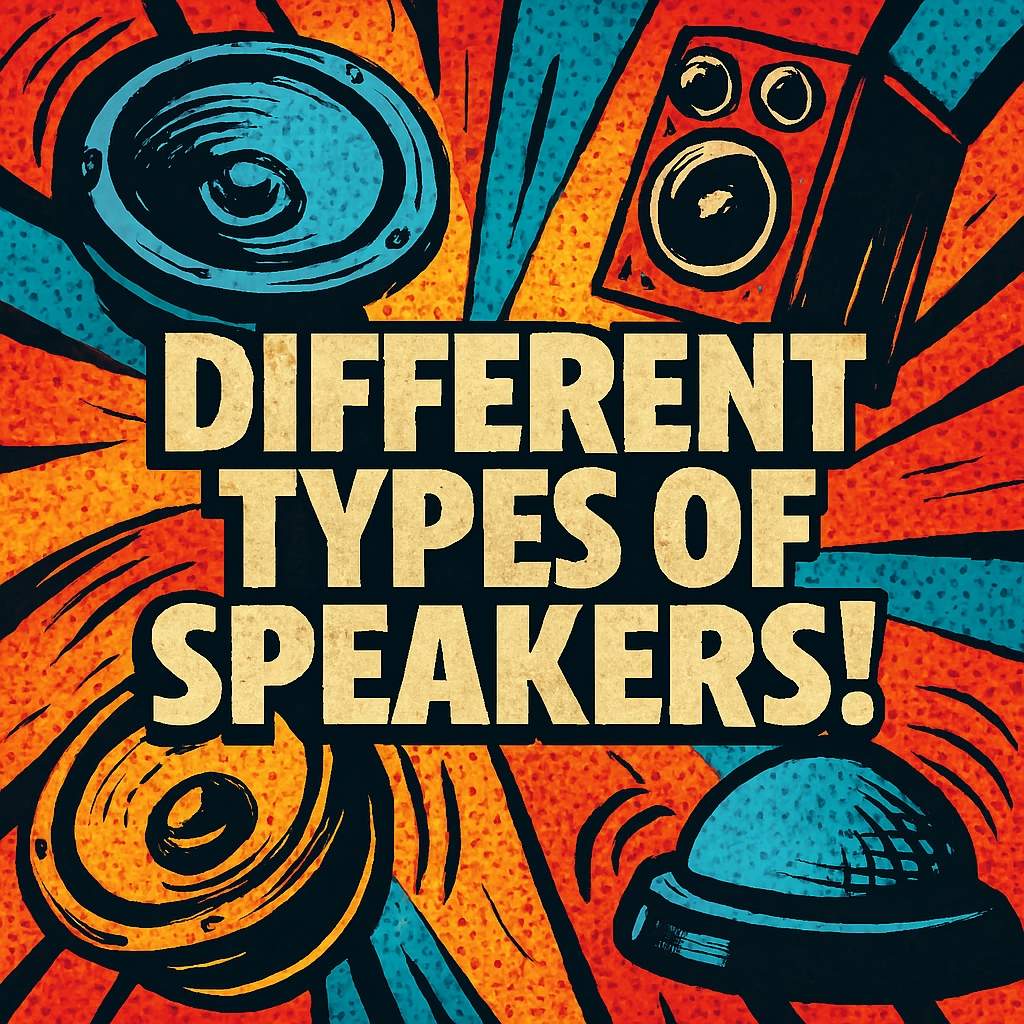

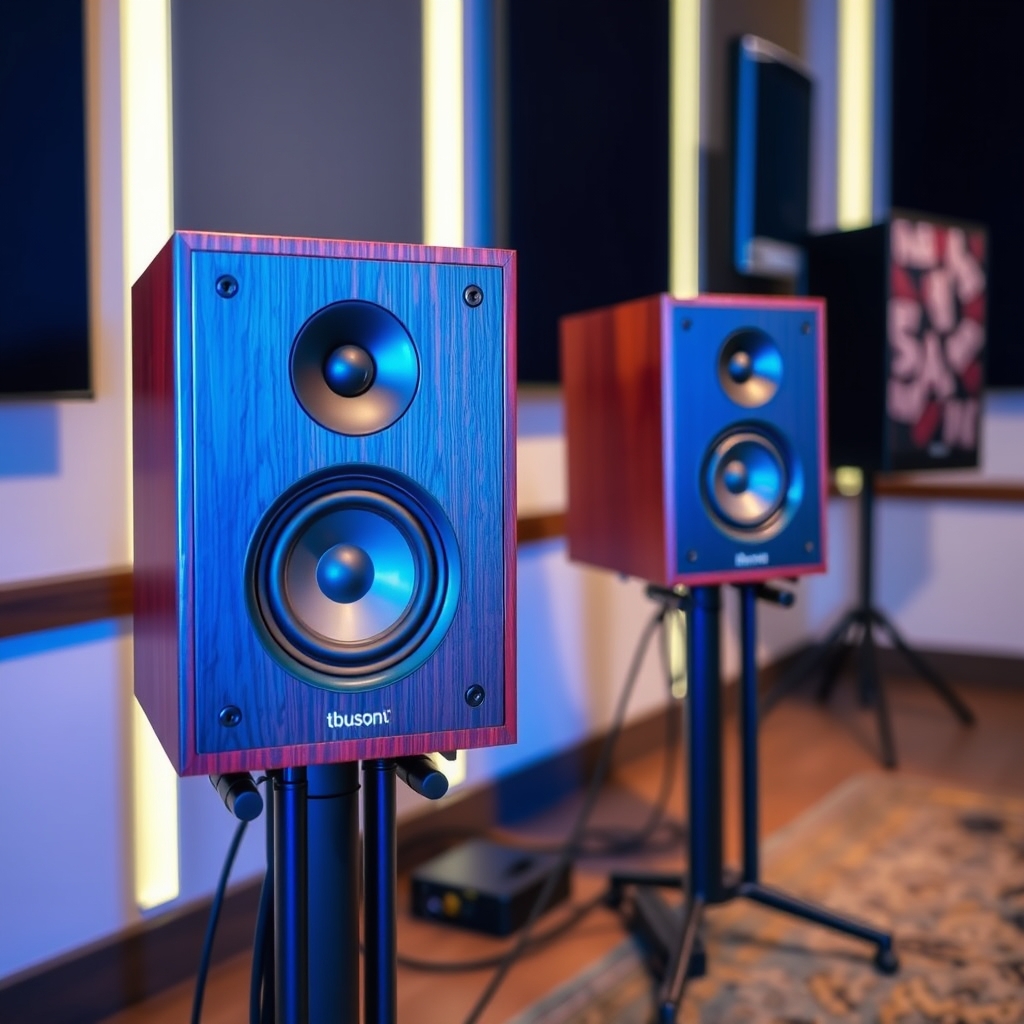

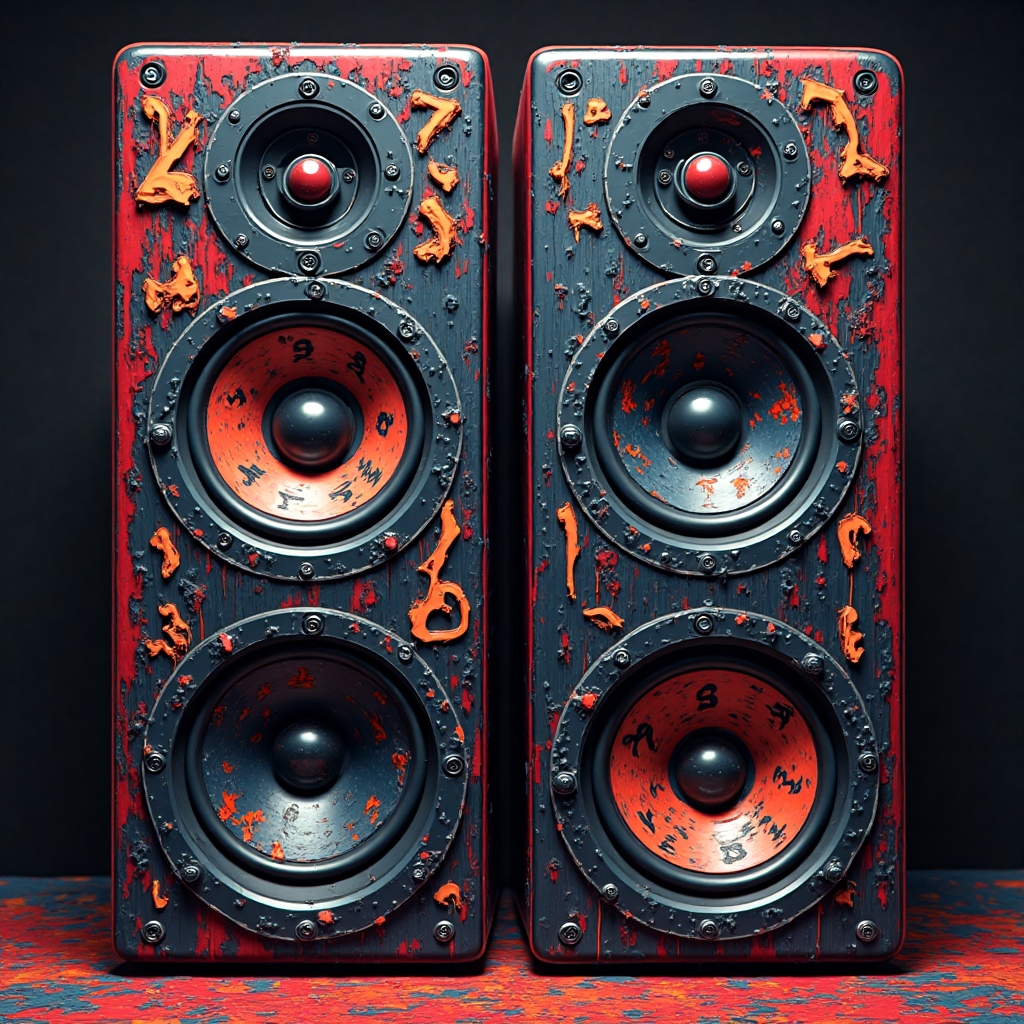
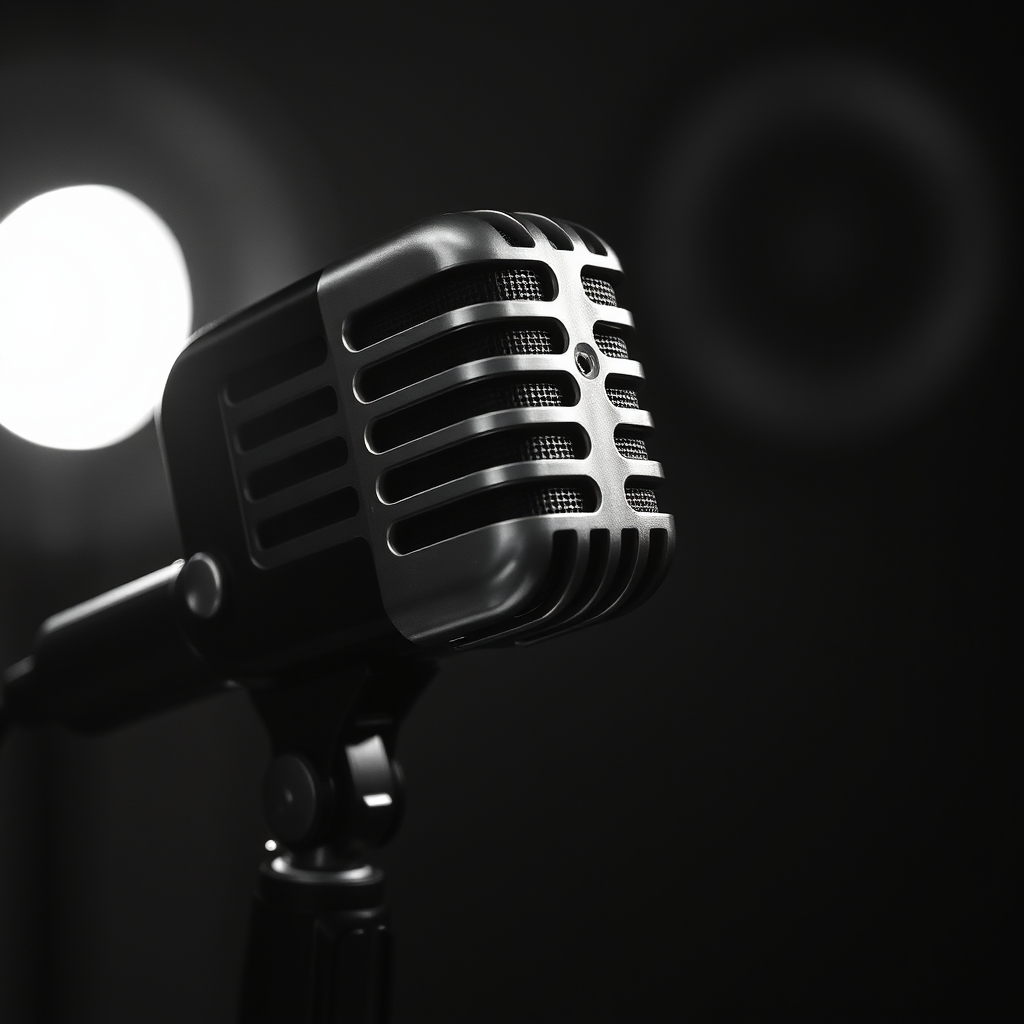
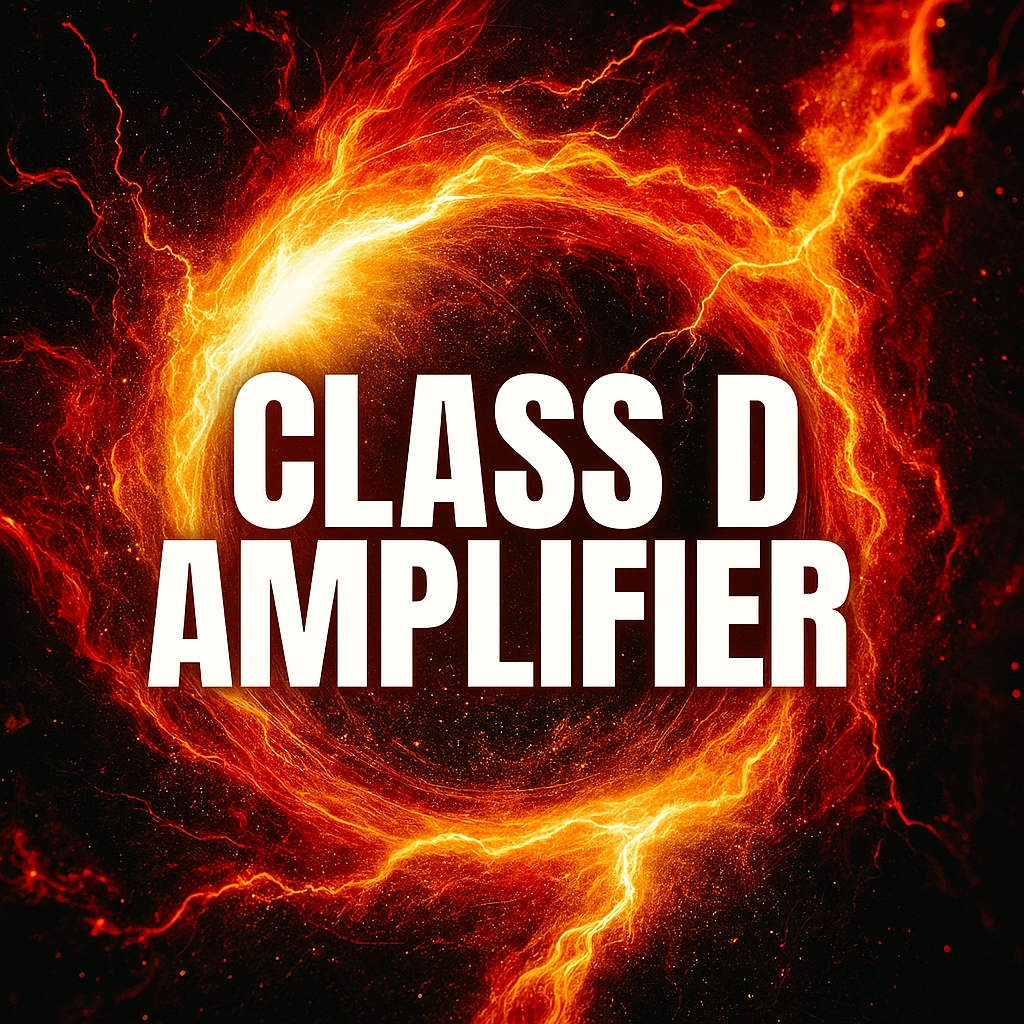
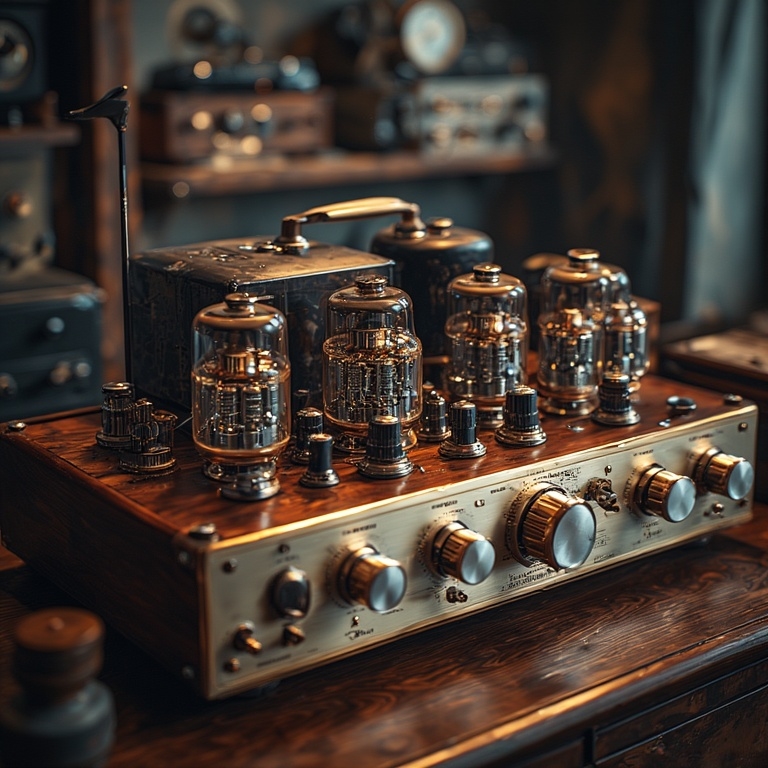






Leave a Reply